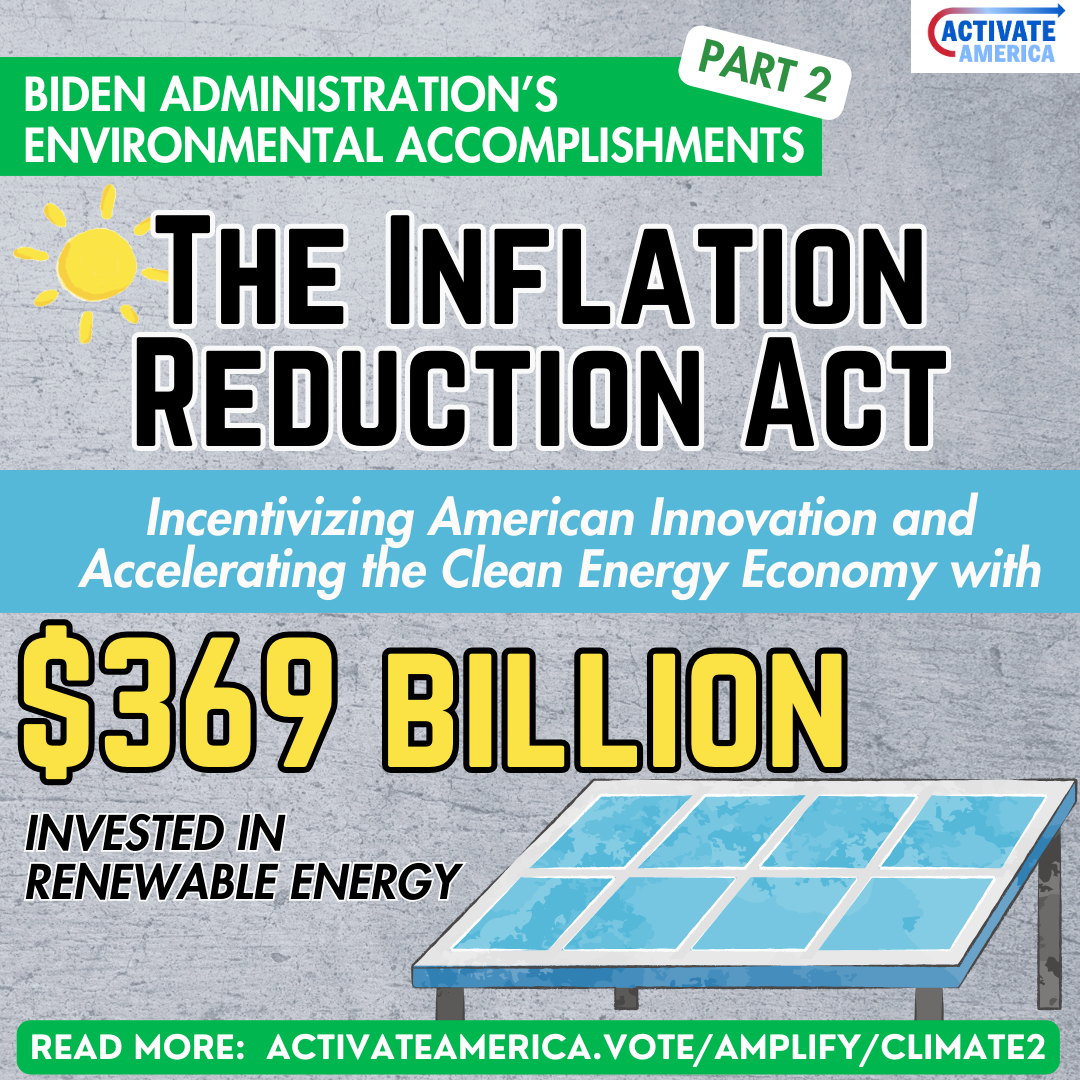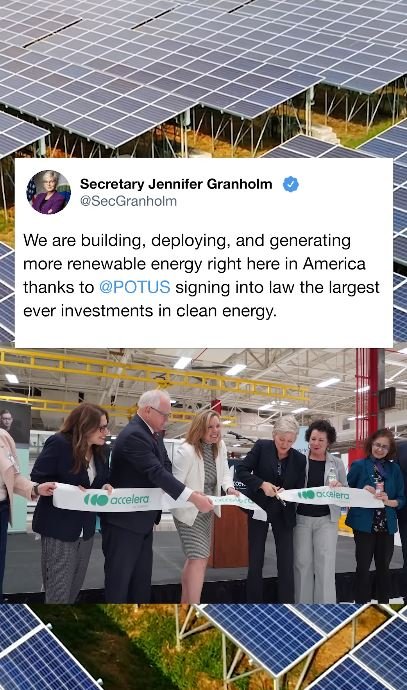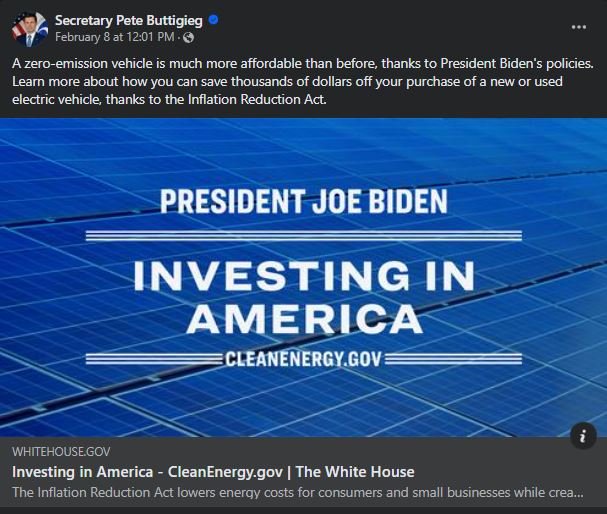Amplify: Biden Administration’s Environmental Accomplishments (Part 2)
This is part 2 of a series amplifying the Biden Administration's environmental accomplishments
In Part 1, we reviewed the Administration’s environmental achievements under the 2021 Infrastructure Act. That legislation was followed in 2022 by the Inflation Reduction Act (IRA), which is widely acknowledged to be the most significant climate legislation in U.S. history.
Despite its name, the IRA is actually also a far-reaching environment and industrial policy bill, designed to reset the country’s focus, incentivize American innovation and accelerate the country’s transition to a clean energy economy.
The Act authorizes direct investments of $369 billion in renewable energy. It also makes carefully targeted long-term tax credits available for industry and consumers to incentivize private investment into research, production and use of green energy, electric vehicles and charging stations, residential clean energy, advanced manufacturing, and alternative fuels.
Highlights: In the first 18 months since passage of the IRA, the progress has already been remarkable:
Clean Energy Generation: Through August 2023, investments of $278 billion (equal to the combined total of all investments in clean energy over the previous 7 years) had been made in 272 new clean energy projects, including 91 new battery manufacturing sites, 65 new or expanded electric vehicle (EV) manufacturing facilities and 84 wind and solar manufacturing plants.
Wind & Solar: According to the Department of Energy, electricity produced by wind is expected to triple and the use of solar power is expected to increase 7 to 8-fold by 2030
Electric Vehicles: Private sector companies have responded aggressively to the tax incentives designed to support the EV industry. Since the beginning of 2021, private investments of over $150 billion in the manufacture of EVs and EV batteries have been announced. Manufacturers are offering new EV models, and EV sales have risen rapidly, from roughly 20,000 per month in 2019, to 90,000 per month in 2023. A record 1.2 million EVs were sold in 2023 – which was 18 years ahead of projections made prior to the Act.
Infrastructure Resilience: Over $1 billion has already been invested to help communities become more resilient and protect against the disastrous impacts of climate change. Studies on a global level show the clear benefits: by spending $50 billion annually now to protect their infrastructures, countries will reduce projected worldwide climate losses by nearly $1 trillion annually by 2050
Greenhouse Gas Emissions: By 2030, IRA programs together with those under the Infrastructure Law will cut U.S. greenhouse gas emissions by up to 41% below 2005 levels.
Job Creation: In its first year, IRA-funded energy projects created more than 170,000 jobs, from solar panel installers to electric vehicle charging station technicians. It is projected that the Act will create over 1.5 million new jobs over the next decade. (A state-by-state breakdown of major areas of job creation can be found here.)
Targeting Communities in Need: Among the most unique (yet under-reported) features of the Act are special tax incentives that reward private investments made in: (1) low-income communities; and (2) areas that have historically depended on the fossil fuel industry for jobs. The goal is to drive development to both areas of economic need and those (e.g., coal regions) where workers are most likely to be displaced by new clean energy technologies.
Consumers: Finally, the Act includes approximately two dozen tax provisions to reduce families’ energy costs and promote clean energy -- from making home weatherization and efficiency upgrades, to buying new appliances, purchasing electric vehicles and installing solar systems. (A comprehensive list of the available incentives can be found here.)
For a comprehensive overview, see the “White House Guide to the Inflation Reduction Act,” which is available online HERE.
Next: In Parts 1 and 2, we’ve highlighted environmental achievements under the Administration’s two historic legislative enactments. In Part 3, we’ll move to the President’s Executive Orders and the actions being taken internationally to address climate change on a global level.
Amplify on Social Media:





